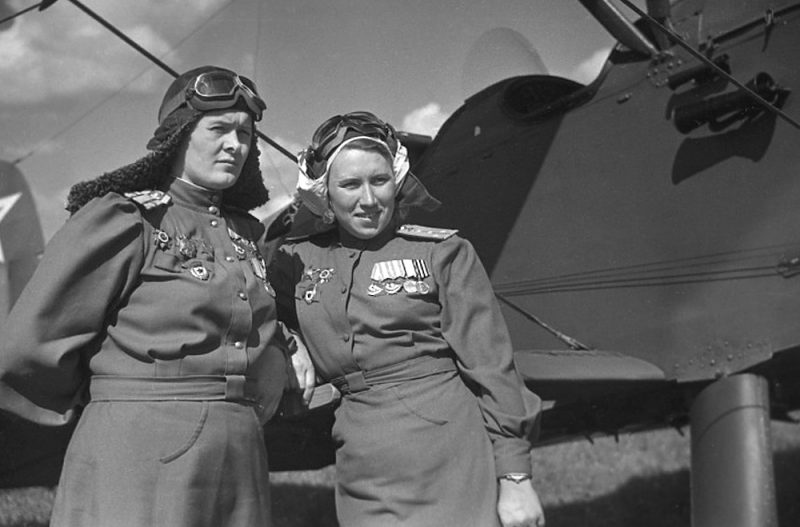In the Second World War, about 800,000 women of the Soviet Union took part. Most of them served in hospitals and communications units or as road troops, anti-aircraft gunners, and snipers. Many women worked in civilian industries and agriculture, often to replace men.
Also, there were the “night witches”—a female night light bomber aviation regiment. However, not a lot of attention was paid to them or other female aviators, and opinions of their service are contradictory. Aviation Colonel Dmitri Panov recalled, for example, “Participation in the war of women aviators was a real barbarity.”
The fate of the women on the front lines of aviation, in the center of the fights with the aces of the Luftwaffe, was tragic: almost all of them were shot down. Yet in general, women coped well with their combat missions. Below is only a small number of the brave female pilots of the USSR.
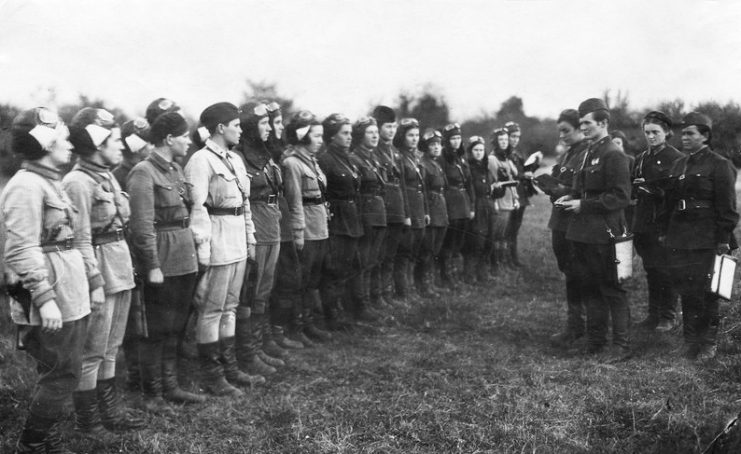
Lydia Litvyak
Lydia Vladimirovna Litvyak was the most productive female aviator of the Second World War. At the age of 14, she began studying at a flying club, and a year later she made her first independent flight.
She continued to study at the Kherson Aviation School, and after that she worked at the Aero Club. Before the war, she was able to train 45 pilots.
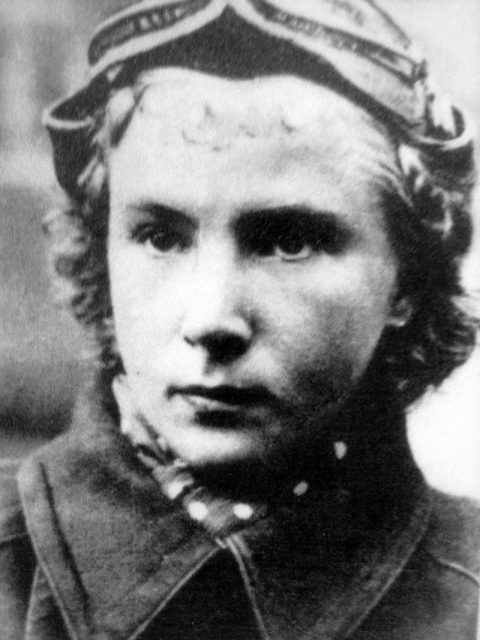
During the war, Lydia fought as part of several guards’ regiments and became the first female fighter to shoot down an enemy aircraft.
Lydia made 168 sorties and garnered 12 personal victories and 4 group victories. On the fuselage of her plane she drew a white lily. Soon after, she began to be called the “White Lily of Stalingrad.”
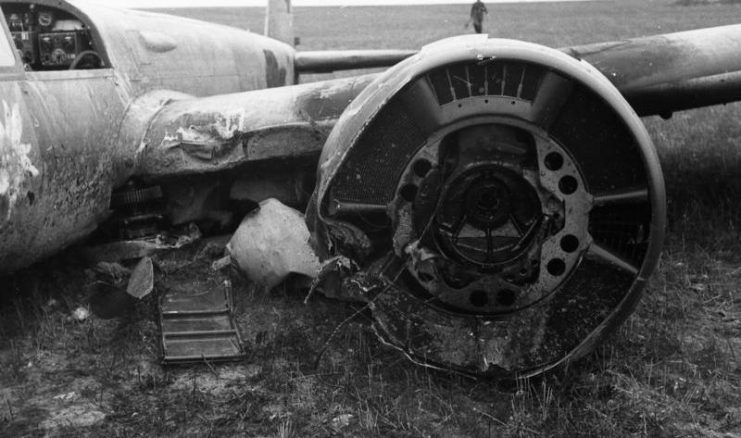
She was eventually shot down. The place of her death became known only several decades later. In 1990, Lydia Litvyak was posthumously awarded the title Hero of the Soviet Union. At the time of her death, she was 21 years old.
Marina Raskova
Marina Raskova became famous for the fact that in 1938, while serving as navigator in a Tupolev ANT-37 called Rodina, she and two other female aviators made a non-stop flight from Moscow to the Far East. For the accomplishment of this flight and the heroism shown, she was awarded the title Hero of the Soviet Union, the Order of Lenin, and the Gold Star medal.
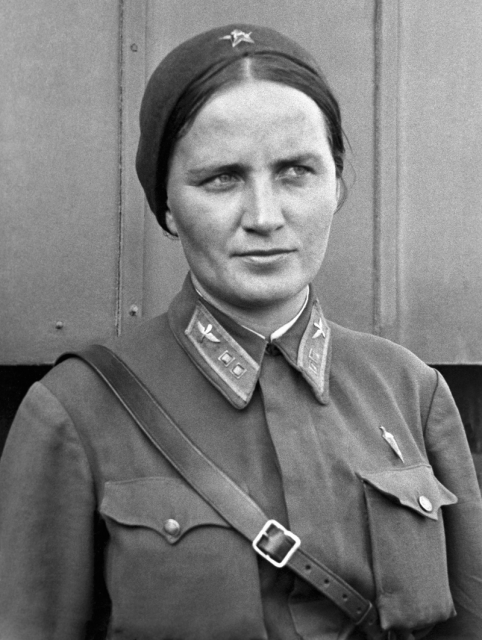
After the start of WWII, Marina Raskova used her position and personal ties with Stalin to obtain permission to create women’s military units. Soon she formed an air group consisting of three air regiments.
In December 1942, the women’s air group was sent to Stalingrad in the midst of fierce fighting. Due to bad weather conditions, they traveled to Stalingrad in small groups. On January 4, 1943, during one of the flights to the Saratov region, Marina Raskova’s plane crashed during a forced landing on the banks of the Volga River.
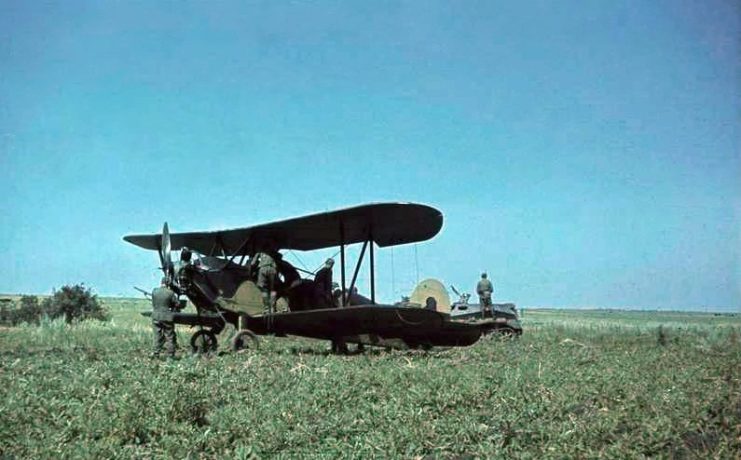
Photo by Bundesarchiv, Bild 169-0112 / CC-BY-SA 3.0
Raskova died, but the work she had started continued to live. Many female pilots continued to fight Nazism throughout the war. Raskova’s body was cremated, and her ashes were placed in an urn in the Kremlin wall at Red Square in Moscow. Streets in many Russian cities are named after her.
Yevdokia Bershanskaya
On the all-female 46th Guards Night Bomber Aviation Regiment rest many legends. For their fearlessness and skill the Germans called them “Night Witches.” Their nightly attacks on enemy positions in the years of WWII formed the basis of feature films, books and even musical compositions.
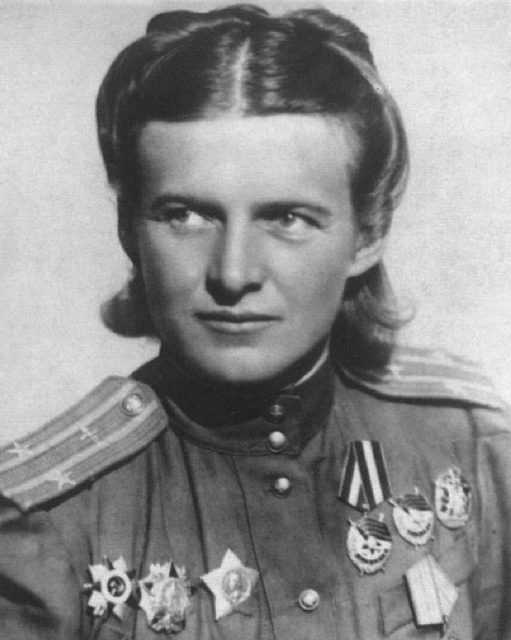
The commander of these fearless women was Yevdokia Bershanskaya. She enjoyed authority and respect among female pilots and was a prudent and competent commander. Bershanskaya personally performed more than 20 sorties. Under her command, the female regiment made more than 23,600 sorties, dropping more than 3,000 tons of bombs on opponents.
Under the command of Evdokia, 23 women of the 46th Guards were awarded the title Hero of the Soviet Union, and more than 250 personnel were awarded twice or three times with medals and orders.
https://youtu.be/dIVeiG8QXVo
After the war, she worked in the Committee of War Veterans and the Committee of Soviet Women. She died at the age of 69 from a heart attack. A monument was erected at the Krasnodar airport in honor of Yevdokia Bershanskaya, and bears her quotation: “The winner is the one who, when performing a combat mission, is able to overcome any difficulties, showing skill, bravery, endurance.”
Valeria Khomyakova
From childhood, Valeria Khomyakova loved engineering, and after graduation from school she worked as an engineer at a Moscow plant. She also was a pilot instructor at a local flying club. After the start of the war, she volunteered for military service, and as a female fighter pilot she made sorties on a Yak-1 plane.
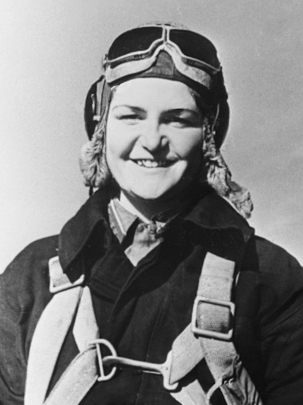
On the night of September 25, 1942, she prevented a German JU-88 bomber from attempting to destroy the bridge over the Volga River. Thus, for the first time in aviation history, a female pilot shot down an enemy bomber in a night battle. Later she said, “I destroyed this bastard. Let the enemies know how good our girls are!”
The next day, Valeria was promoted to lieutenant and deputy squadron commander. For her heroism, she was awarded the Order of the Battle Red Banner.
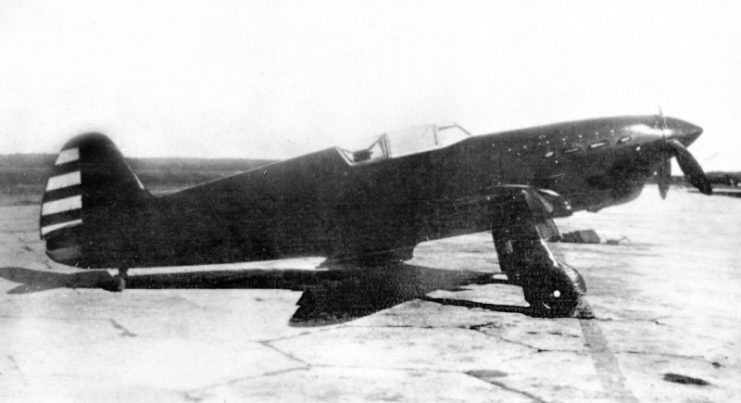
Shortly thereafter, foreign journalists arrived at the regiment to take a photo of a brave female pilot. In the photo, Valeria Khomyakova is in civilian attire and walking across a field, holding a book in her hands. Unfortunately, this photo was the last to be taken in the life of a woman who died in a plane crash on October 6, 1942.
Olga Lisikova
Olga Lisikova began learning to fly in 1934 in the Tambov civil school. In 1936 she was sent to the Bataysk flight school, and a year later she finished studying and became part of a women’s squadron. In 1939-1940, Olga took part in the Winter War and evacuated the wounded soldiers of the Red Army.
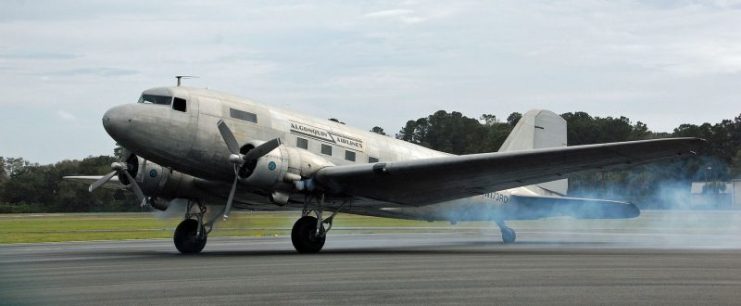
After the entry of the Soviet Union into WWII, she flew the Douglas DC-3 and Douglas C-47 Skytrain American transport aircraft. Olga was involved in the transportation of medicines, wounded soldiers, blood for transfusions, and other goods.
Read another story from us: Soviet Women Tankers who Carried Destruction to the Nazis
In 1941, while piloting an unarmed ambulance plane, she entered into an unequal battle with a Messerschmitt. Olga’s plane was damaged, but she managed to get the German fighter behind her in the gorge. In the end, the German pilot made a mistake and swooped so low that he did not have enough time for his aircraft to rise back out of the gorge.
During the years of WWII specifically, Olga made 280 combat missions, and during her entire career as a pilot she flew about 400 combat missions. Olga Lisikova was the only Soviet female pilot to fly the DC-3 and C-47. She lived a long life and died on September 7, 2011.
